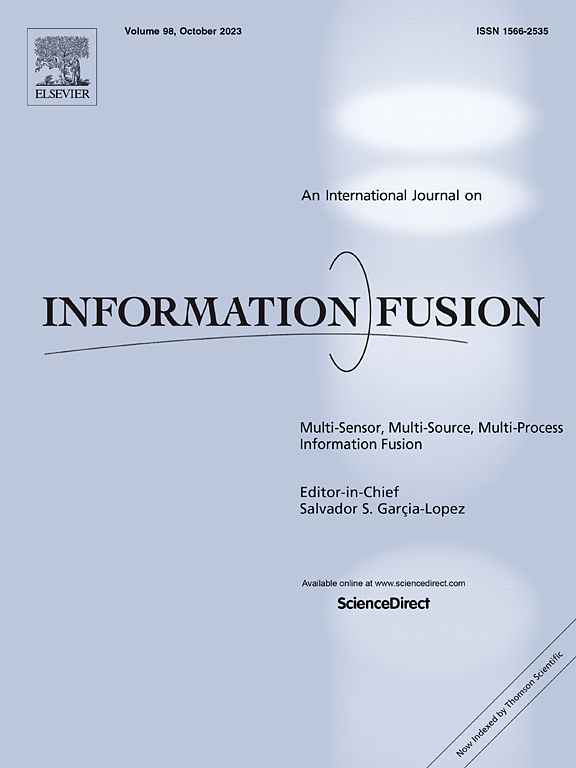A systematic review for artificial intelligence-driven assistive technologies to support children with neurodevelopmental disorders
IF 14.7
1区 计算机科学
Q1 COMPUTER SCIENCE, ARTIFICIAL INTELLIGENCE
引用次数: 0
Abstract
This systematic review examines AI-powered assistive technologies for children with neurodevelopmental disorders, with a focus on dyslexia (DYS), attention-deficit hyperactivity disorder (ADHD), and autism spectrum disorder (ASD). Our analysis of 84 studies from 2018 to 2024 provides the first thorough cross-disorder comparison of AI implementation patterns. According to our data, each condition has different success rates and technological preferences. AI applications are expanding quickly, especially in research on ASD (56 % of studies), followed by ADHD (36 %), and DYS (8 %). In almost half of the reviewed studies, computer-assisted technologies, which have demonstrated encouraging results in terms of treatment support and diagnostic accuracy, became the main mode of intervention. Despite high accuracy in controlled settings, the implementation of these technologies in clinical practice faces significant challenges. While human oversight remains essential in clinical applications, future advancements should prioritize privacy protection and the ability to assess tools longitudinally. Notably, multimodal approaches that integrate various data types have improved diagnostic accuracy; recent research has shown that they can detect ASD with up to 99.8 % accuracy and ADHD with up to 97.4 % accuracy. A promising trend is the combination of mobile applications and wearable technology, especially for real-time monitoring and intervention. This review highlights the potential and current limitations of AI-driven tools in supporting children with neurodevelopmental disorders. Future development should focus not on replacing clinical expertise, but on augmenting it. Research efforts should aim at creating tools that enhance professional judgment while preserving the essential human components of assessment and intervention.
人工智能驱动的辅助技术支持儿童神经发育障碍的系统综述
本系统综述探讨了人工智能辅助技术在神经发育障碍儿童中的应用,重点关注阅读障碍(DYS)、注意力缺陷多动障碍(ADHD)和自闭症谱系障碍(ASD)。我们对2018年至2024年的84项研究进行了分析,首次对人工智能实施模式进行了彻底的交叉对比。根据我们的数据,每种情况都有不同的成功率和技术偏好。人工智能的应用正在迅速扩大,特别是在ASD的研究中(56%的研究),其次是ADHD(36%)和DYS(8%)。在几乎一半的审查研究中,计算机辅助技术成为主要的干预模式,在治疗支持和诊断准确性方面显示出令人鼓舞的结果。尽管在受控环境下具有很高的准确性,但这些技术在临床实践中的实施面临着重大挑战。虽然人类监督在临床应用中仍然至关重要,但未来的进步应该优先考虑隐私保护和纵向评估工具的能力。值得注意的是,集成各种数据类型的多模式方法提高了诊断准确性;最近的研究表明,它们检测ASD的准确率高达99.8%,检测ADHD的准确率高达97.4%。一个很有前景的趋势是移动应用程序和可穿戴技术的结合,特别是在实时监测和干预方面。这篇综述强调了人工智能驱动的工具在支持神经发育障碍儿童方面的潜力和当前的局限性。未来发展的重点不应是取代临床专业知识,而应是增强临床专业知识。研究工作应着眼于创造工具,以加强专业判断,同时保留评估和干预的基本人为因素。
本文章由计算机程序翻译,如有差异,请以英文原文为准。
求助全文
约1分钟内获得全文
求助全文
来源期刊

Information Fusion
工程技术-计算机:理论方法
CiteScore
33.20
自引率
4.30%
发文量
161
审稿时长
7.9 months
期刊介绍:
Information Fusion serves as a central platform for showcasing advancements in multi-sensor, multi-source, multi-process information fusion, fostering collaboration among diverse disciplines driving its progress. It is the leading outlet for sharing research and development in this field, focusing on architectures, algorithms, and applications. Papers dealing with fundamental theoretical analyses as well as those demonstrating their application to real-world problems will be welcome.
 求助内容:
求助内容: 应助结果提醒方式:
应助结果提醒方式:


